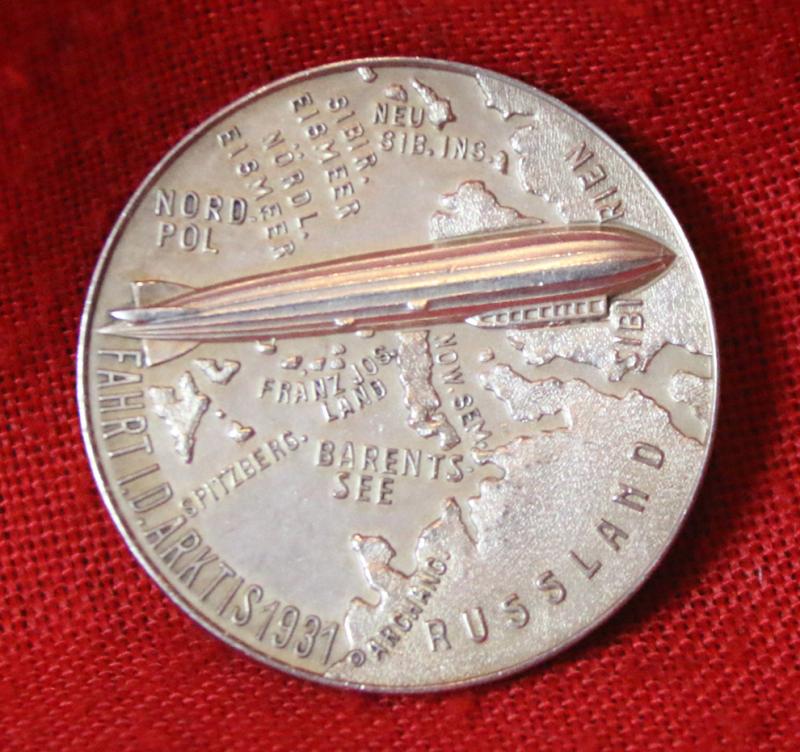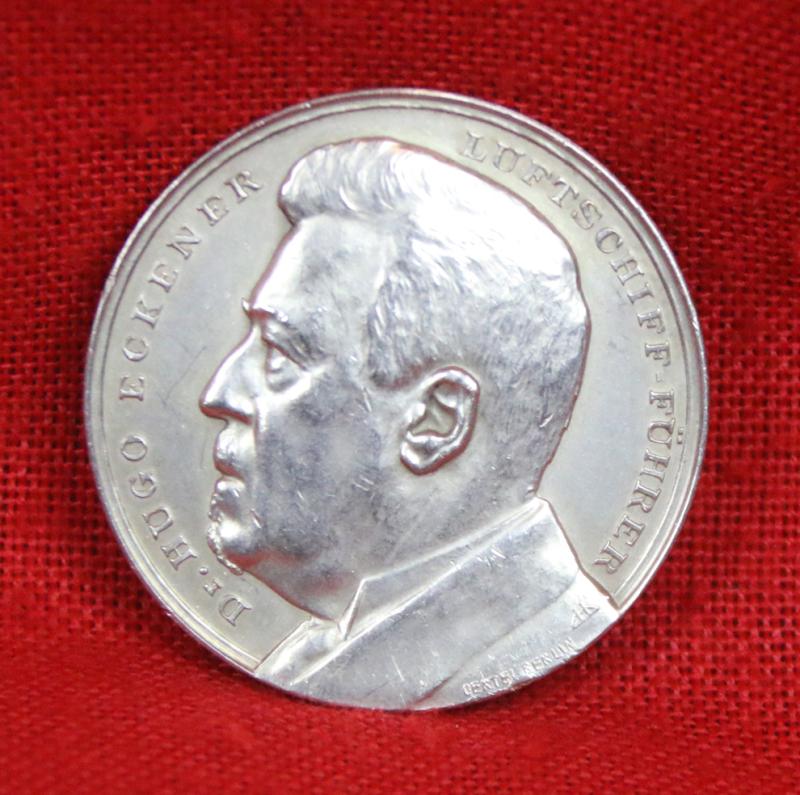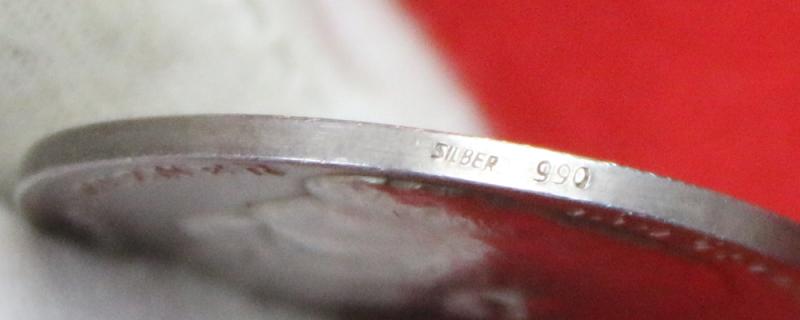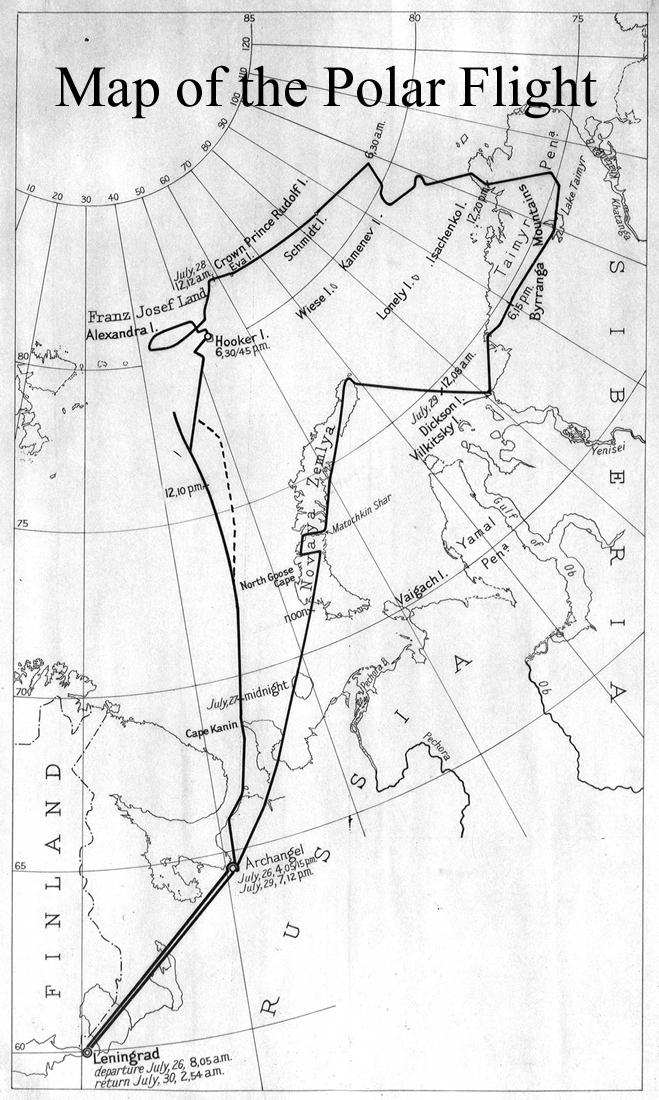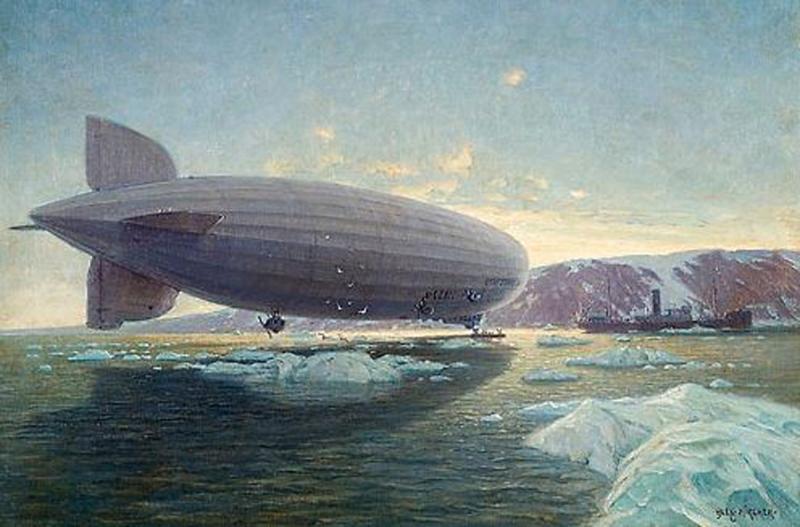A Most Scarce Graf Zeppelin Airship LZ127: Polar flight 1931 -Silver Medal in 990 Silver
A most rare piece, but remarkably we acquired this fine example in near mint frosted finish thanks to another example but in original near mint bright polish that we sold only two weeks ago. That past medal was spotted by this rare medal's owner on our website, and they offered it to us. It is only the second of its type of this rare medal we have had in over 15 years. Minted in 990 fine silver, in overall excellent condition.
On July 24, 1931, the airship "Graf Zeppelin" took off from Friedrichshafen for the then sensational polar or Antarctic voyage. The route led via Friedrichshafen, Berlin-Staaken, to Leningrad, Franz-Josef-Land (Arctic), back via Berlin-Tempelhof to Friedrichshafen. The impressive driving distance was 13,308 km.
The idea of using airships to explore the Arctic had been a dream of Count Zeppelin 20 years earlier, but was put on hold during World War I. Roald Amundsen had taken a Dornier Wal flying boat to the Arctic in July 1925, and commented that an airship would have been a better vehicle for the journey. Arctic exploration was one reason used to justify the restoration of Germany's right to build airships. Eckener had taken Graf Zeppelin on a three-day trip to Norway and Spitsbergen in July 1930 to test its performance in the region. This was followed by a three-day flight to Iceland.Both trips were completed without technical problems.
The International Society for the Exploration of the Arctic by Air (Aeroarctic) was interested in getting Eckener involved in a polar flight. Fridtjof Nansen, the president of Aeroarctic, died suddenly, and Eckener was offered the presidency. Overwhelmed by the offer, he consulted the German Chancellor, Heinrich Brüning, who was unable to help him.Wilkins then suggested a polar rendezvous. The initial plan was to meet the Nautilus (SS-73), the submarine in which Wilkins was attempting a trip under the polar ice. The submarine suffered technical problems and was later scuttled off Bergen, Norway.
The polar flight (Polarfahrt 1931) lasted from 24 to 31 July 1931. Graf Zeppelin carried emergency equipment including tents, inflatable boats, fishing equipment, petrol stoves, and 4,100 kg (9,000 lb) of food. To save weight, luxury fittings were removed and the beds were replaced by lightweight bunks. The ship rendezvoused with the Soviet icebreaker Malygin, which had the Italian polar explorer Umberto Nobile aboard. It exchanged 120 kg (260 lb) of souvenir mail with the airship, which Eckener landed on the Arctic Ocean, using canvas buckets of sea water to descend to the surface, flotation aids, and a sea anchor to hold position. Fifty thousand cards and letters, weighing 300 kg (660 lb), were flown. The costs of the expedition were met largely by the sale of special postage stamps issued by Germany and the Soviet Union to frank the mail carried on the flight.
The writer Arthur Koestler was one of two journalists on board, along with a multinational team of scientists led by the Russian Professor Samoilowich, who measured the Earth's magnetic field, and a Russian radio operator, Ernst Krenkel.The expedition photographed and mapped Franz Josef Land accurately for the first time, and came within 910 kilometres (570 mi; 490 nmi) of the North Pole. It deployed three early radiosondes over the Arctic to collect meteorological data from the upper atmosphere; they were released through a specially built large hatch in the keel, with a weight that dropped away, allowing them to climb. LZ-127 and boat from the Soviet icebreaker Malygin at Franz-Josef Land
A rather dramatic scene of the U-LZ127 GRAF ZEPPELIN loading or unloading passengers being ferried between it an a large steamer during its July 1931 Arctic voyage.by Alexander Kircher The painting sold in 2005 at Cowan's Auction, Cincinnati in for $19,550
Code: 24606

